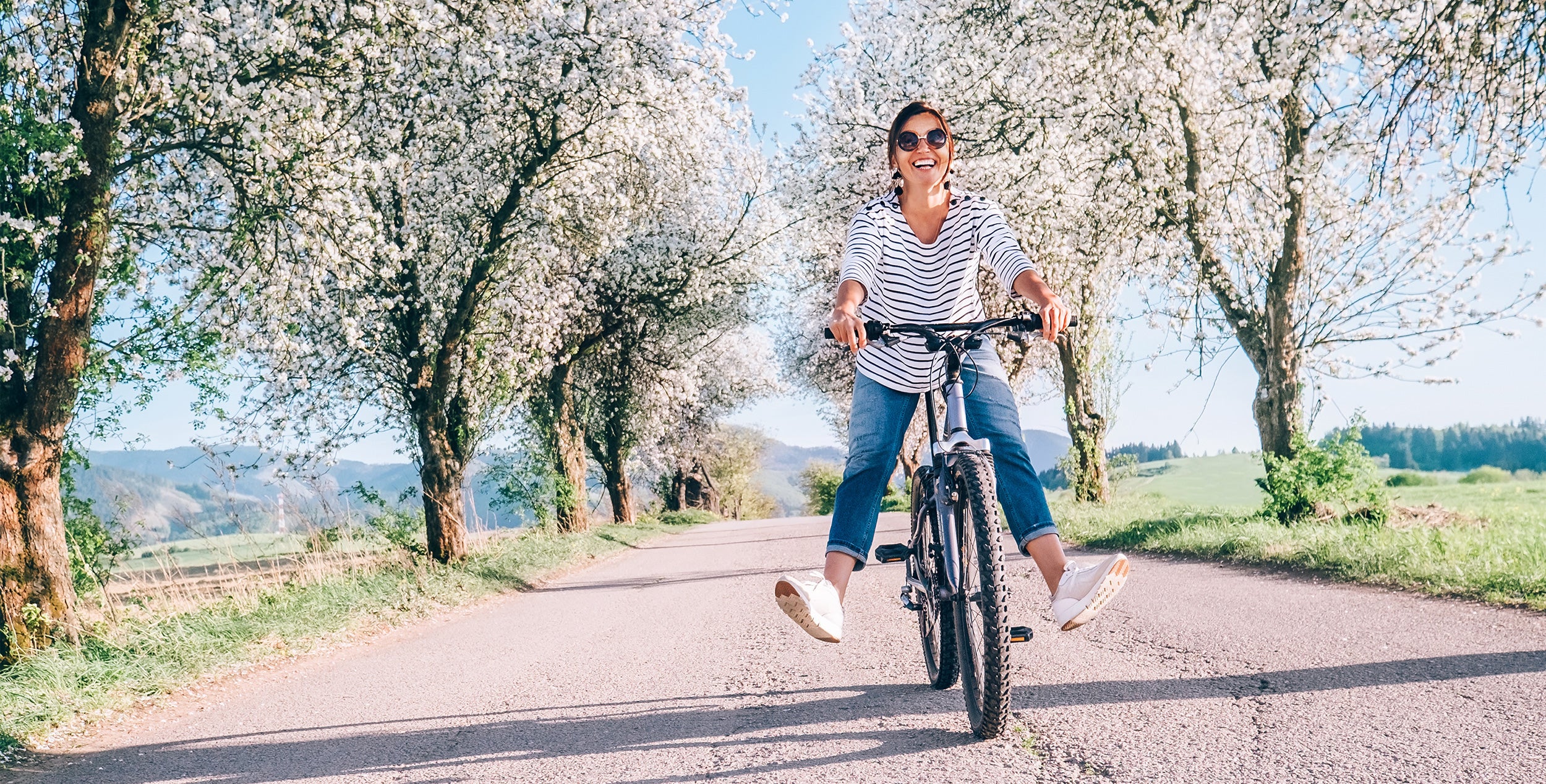Ride a bike!

Being your own drive and motor, feeling the wind in your face and the freedom and lightness that comes with it are moments of happiness that all cyclists love. But it's not just the joys of cycling, there are also convincing benefits for health, mobility and environmental protection.
Danes jet off on bikes
Copenhageners have long known how quickly you can get to your destination by bike in city traffic, for example - the car is only faster than the bike from a distance of six kilometers. Since 2016, more bicycles have been riding through the city center than cars. However, cycling is also particularly attractive here; Copenhagen is considered the most bicycle-friendly city in the world. Incidentally, Bremen is the best city in Germany for cyclists. How environmentally friendly cycling is is self-explanatory, after all, unlike petrol, muscle power does not release CO2. On the other hand, cycling burns calories, up to 600 kcal per hour depending on the speed. And according to the WHO, cycling 4.5 kilometers a day even reduces the risk of a heart attack by up to 50 percent.
Now it's time to get fit on your bike
Fancy cycling again, but your bike has been in the cellar for a while? No problem, you can get it fit again very quickly:1. brakes
Functioning brakes are essential for road safety; there must be one on the rear wheel and one on the front wheel. If the grip can be easily pushed through to the handlebars, the brake play is too great. The braking force can be adjusted with knurled screws on the brake lever and the brake body.
2. light
Functioning front and rear lights are mandatory and absolutely essential for safety on the road. Hub dynamos often provide the power supply on the bike - also make sure that the front light is not set too high. The cone of light should illuminate the road and not dazzle oncoming traffic.
3. tires
Check that the tires still have sufficient tread. If a tire needs to be replaced, a new one with special puncture protection is recommended. Then the tire pressure must be correct - you will find the minimum and maximum pressure on the sidewall of the tire. Foot pumps with a pressure indicator are ideal for this purpose.
4. clean and oil the chain
Run the chain through a cotton cloth and then oil it. The chain and sprockets should be replaced by a specialist every few years.
Which bike for whom?
If you want to buy a new bike and are not sure which bike is the right one for you, you should ask yourself where and on what surface you ride, how long the routes are and how often the bike will be used, what riding style you have and what equipment you need.
If you want to cycle as a sport, especially on long rides, the aerodynamic racing bike is the right bike for you. It has a wheel size of 28 inches, narrow tires, curved handlebars, a rigid fork and no suspension; overall, it consists of very lightweight components.
For sporty after-work rides or day tours, we recommend the mountain bike or the cross bike. The mountain bike can be ridden off-road, i.e. on field and forest paths as well as uneven terrain. It has no StVZO equipment, wide tires, usually derailleur gears and the wheel size is usually between 27.5 and 29 inches.
The cross bike can be ridden on paved and unpaved paths. Like the mountain bike, it does not have StVZO equipment. The wheel size is 28 inches, most models are without pannier rack and mudguards and with derailleur gears, some models have a suspension fork.
The trekking bike is particularly versatile; it is just as suitable for short distances as it is for day trips or cycle tours. It rides just as well on easy terrain such as forest paths and gravel as it does on the road, and luggage can be easily transported on it. Some models are equipped with a suspension fork and the hub gears are usually robust. For those who only ride short distances in the city and like to be as comfortable as possible, the city bike is the best choice. Here you sit comfortably upright on the bike, there are models with and without suspension, with or without back-pedaling, usually with robust hub gears or derailleur gears.
Extra tip: Cycling touring
Cycling from morning to night, covering kilometers either ambitiously or leisurely, exploring and enjoying the countryside - a cycling vacation offers all of this. Here is a small selection:
Baltic Sea Coast Cycle Route
1,100 kilometers along the German Baltic coast from Flensburg to the island of Usedom. Steep cliffs, fishing villages and seaside resorts, forests and beaches offer plenty of variety and the picturesque route always leads directly along the coast. More infoRhine Cycle Route
1,230 kilometers of cycling paradise in five countries, from the source in the Swiss Alps to the estuary near Rotterdam in the Netherlands offers something for everyone: the 400 kilometers in Switzerland are particularly suitable for sporty cyclists, the German section especially for leisure cyclists. More infoLake Constance-Königssee cycle route
The 420-kilometer route offers beautiful and varied landscape panoramas. The cycle path starts in Lindau on Lake Constance and then crosses the foothills of the Alps to Königssee near Berchtesgaden. The route is a little demanding with its elevation gain, so you should have a good basic level of fitness. After the effort, you will be rewarded with a refreshing swim in the Alpsee, Kochelsee, Tegernsee or Chiemsee.More info



